10 lessons learnt from COVID-19
A report on the key lessons identified during the COVID-19 pandemic, with a focus on anaesthesia and intensive care
10 lessons learnt from COVID-19
The COVID-19 pandemic has presented huge challenges for the NHS and health, care and public health professionals as well as the healthcare system as a whole. Anaesthetists and intensivists, alongside their colleagues, have found themselves at the centre of this crisis and have had to learn and adapt at pace to provide the best possible care for the sickest COVID-19 patients under very challenging circumstances.
It is clear that we need to embed the learning and experiences from this pandemic into our health and care systems so as to be able to manage future surges or further pandemics alongside the management of all other medical conditions.
As the UK starts to slowly emerge from the worst of the pandemic, we want to take the opportunity to reflect on experiences of doctors in anaesthesia and intensive care by identifying in this short report the ten key lessons and the opportunities they present for supporting the recovery of the NHS and for building back a stronger and more resilient healthcare system.
The lessons and recommendations in this report have been informed by a wide range of evidence gathering activities carried out during the pandemic, including:
- findings from surveys of the RCoA members carried out during the peaks of the pandemic
- the NAP7 Anaesthesia and Critical Care COVID Activity Tracking Surveys (ACCC-track)
- insights from senior College officers and its Clinical Directors Network.
This short report is the culmination of our COVID-19 campaign, focused on supporting our members and advocating for impactful change during COVID-19. It will be a key document for informing any future COVID-19 Inquiry work, briefings to parliamentarians and devolved administrations, and our national influencing campaigns on workforce and perioperative care. The report will also be shared with the wider healthcare sector and NHS leaders to support and inform the recovery from COVID-19 and for preparing for future pandemics.

“[COVID-19] definitely had a strain on home/personal relationships which has a bearing on mental health and therefore affects working life.” Anaesthetist in training
In addition to the enormous pressure that anaesthetists faced in working at the frontline during the pandemic, many also had to spend considerable time away from family and friends to the detriment of their mental and physical health. We surveyed RCoA members regularly throughout the pandemic about their experience of working on the frontline during the pandemic including the state of their mental and physical wellbeing. Many responded that they had felt mentally unwell in the July 2020 COVID-19 survey, with 64% reporting that they suffered mental distress during the pandemic. Our latest COVID-19 snap survey in 2021 has shown that over a third of anaesthetists have experienced poor or very poor mental health due to the pandemic, and nearly a fifth are thinking of leaving the profession altogether.
During periods of intense COVID-19 activity, the availability of proper rest facilities as well as resources and information on where to seek help have been critical to support frontline healthcare workers. There are many examples of good practice which should be applied consistently during future surges and throughout the recovery, and beyond.
Morale and well-being in the NHS was already a concern before the pandemic, as highlighted in a report on the experiences of anaesthetists in training by the College in 2017. The pandemic has magnified many of the issues identified in the report, specifically burnout and stress and the detrimental effect these have on physical and mental wellbeing. As we emerge from the latest surge, there can be no NHS recovery without NHS staff recovery. In particular, those who have worked at the frontline of COVID-19 must be allowed adequate rest and recuperation as part of the restoration of healthcare services.
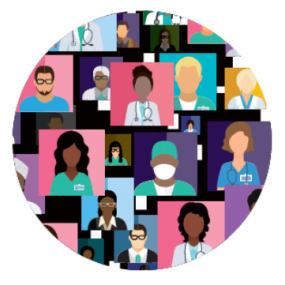
“Build future resilience by investment in a larger, more generalist and more flexible workforce - with a lot of anaesthetists in it.” Clinical Director’s Network
The pandemic has exposed the workforce shortages and the need for workforce planning as a critical component of future-proofing the NHS for future pandemics. Space, equipment and facilities are important, but without the staff to fill them the NHS will not be able to make full use of these resources.
The NHS was already short of staff before the pandemic. Our latest census reveals that:
- the funded workforce gap in consultant anaesthetists has been steadily increasing across the UK from 4.4% in 2015 to 8% in 2020, and that the aspirational gap (the number of anaesthetists required to deliver the service sustainably) is currently at 12%
- more than 90% of anaesthetic departments in the UK have at least one unfilled consultant post
- the anaesthetic workforce is ageing. The number of consultants who now work beyond 60 is up from 5% in 2015 to 7% in 2020.
- specialty and Associate Specialist (SAS) and Trust doctor numbers are unchanged compared to the 2015 Census, despite increased demand and their key role in delivery of anaesthetic services and, in many instances, supporting anaesthetic rota gaps
A stronger, larger workforce would ensure that NHS hospitals could better sustain the increased workload during pandemics without a detrimental impact on the business as usual activity and the wellbeing of staff.
In particular, there needs to be investment in a larger and more flexible workforce – this should include anaesthetists and intensivists, but very importantly nurses, particularly critical care nurses, the shortage of which has limited the expansion plans of many departments during surges.
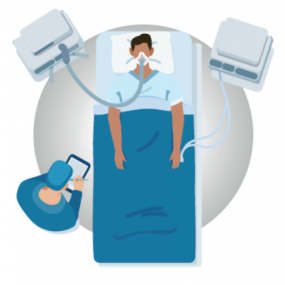
“[The system should] design hospitals so that there can be reconfiguration of services, e.g. additional critical care capacity, with as little impact as possible on business as usual.” – Clinical Director’s Network
The UK has one of the lowest critical care bed to population ratios in Western Europe. When the pandemic hit, a great deal of time and effort was spent reorganising wards and operating theatres to cope with the influx of COVID-19 patients requiring intensive care, leading to the suspension of or reduction in the delivery of elective care even for urgent and time-critical treatments such as cancer.
Critical care capacity should be a key priority for building back an NHS that can cope with future pandemics and surges, for example through the expansion of postoperative care units and the adoption of the enhanced care model to improve patient flow, support operative scheduling and release capacity within critical care for the patients who need it most.
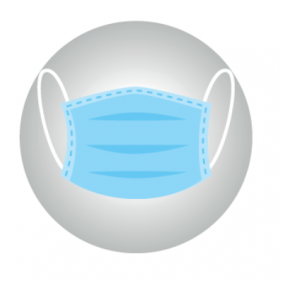
“The procurement system was not robust and it wasn’t well planned for an epidemic.” Clinical Director’s Network
PPE was a vital part of safe working for anaesthetists who needed enhanced protection from infection in high-risk settings. The procurement system for PPE, however, was found not to be robust enough and was not as effective as it should be for a pandemic of this scale. In the April COVID-19 survey, 17% of anaesthetists did not have access to adequate supplies of appropriate PPE. In a further survey in July 2020, 15% of respondents still expressed concern about the availability of PPE.
Any shortage of PPE during a pandemic is undesirable, as it puts healthcare staff and their patients at increased risk from infection. In order to ensure that adequate PPE is available in times of crisis, a central PPE stockpile should be kept for future use and, where possible, domestic production and supply systems should be built up to make the UK less reliant on imports from other nations. Usage of PPE must be informed by clear guidance and communication of protocols.
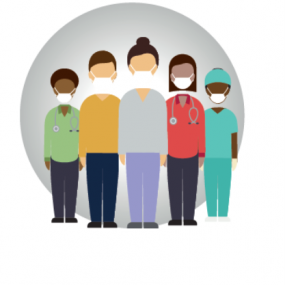
“Perioperative care is important in making sure the patients are well optimised and prepared for surgery.” Clinical Director’s Network
“As we look increasingly to the future, it’s clear that perioperative care offers solutions to some of our COVID-recovery challenges, from the recovery of planned surgery, to increasing our enhanced care capacity, reducing health inequalities, and empowering patients and our communities to lead healthier lives.” Minister of State for Care, Helen Whately, April 2021
Quality perioperative care – the integrated care of patients from the moment surgery is contemplated through to their full recovery – can have a transformative impact on the lives of patients, improving their overall health, reducing complications after surgery, and helping them get back home or back to work sooner. It also promotes the ‘quadruple aim’ of improving the health of the population, improving quality and patient experience of care, improving staff experience, and reducing the cost of care.
Quality perioperative care will also, as the Minister states, help us tackle some of the most pressing COVID-recovery challenges – especially the recovery of elective surgery.
NHS waiting lists now stand at an all-time high of over 4.6 million. This doesn’t even include the millions of ‘hidden patients’ who have been deterred by the pandemic from coming forward for routine care. Tackling a backlog of this scale will require a step change in NHS practice. One of the leading causes of cancellations of on the day of surgery is because the patient is not fit and ready for their operation. To make up lost ground from the pandemic, that will need to change. Using perioperative approaches, such as preoperative assessment, shared decision making, and prehabilitation programmes, we can help ensure that patients are ready for their surgery for when the NHS is ready for them. Or as colleagues have argued elsewhere, we can turn ‘waiting lists’ for surgery into ‘preparation lists.’
But despite a strong evidence base about the benefits of perioperative interventions, they are not yet the norm in routine NHS practice. This is a critical time to address the barriers to perioperative care highlighted by the ACCC-track surveys, including shortages of staff, beds, testing capacity and PPE availability, while at the same time facilitating the expansion of perioperative enablers such as the creation of protected elective surgery units, supporting multidisciplinary working and better use of digital communications.
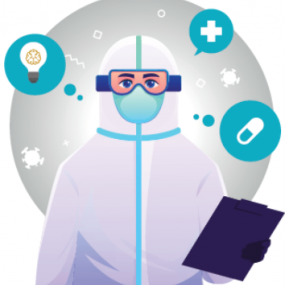
“In addition to experience managing severe Acute Respiratory Distress Syndrome (ARDS) on ICU, I have gained management and organisation competencies.” – Anaesthetist in training (quote edited for clarity)
The pandemic has seen staff working outside of their usual professional scope of practice, for example, working alongside colleagues in intensive care. Cross-skilling has been critical to enabling staff, including anaesthetists, to be redeployed safely to Intensive Care Units (ICUs) during the pandemic, with 50% of respondents in our April 2020 COVID-19 survey saying they had received cross-skilling training. In the COVID-19 winter survey, 53% of members said they had learnt new, transferrable skills during the pandemic. Although training programmes were significantly disrupted, many anaesthetists in training were able to enhance their learning by working in ICU and gaining skills in the management of Acute Respiratory Distress Syndrome, ventilation strategies, using Personal Protective Equipment (PPE) correctly and proning patients.
As it is highly likely that we will see recurring peaks of infection and new variants of COVID-19 it is critical that we maintain the skills gained so that the NHS can be better prepared for predicted surges and difficult winters going forward. Just by offering regular training or rotation of different roles in relevant care settings, such as enhanced care units, we can maintain the knowledge gained and build a pool of ‘reservists’ who can quickly step up to support ICUs when needed.

“There have been 25,000+ publications on covid and sifting the gold out from this is hard.” Clinical Director’s Network
At the start of the pandemic the RCoA, the Association of Anaesthetists, the Faculty of Intensive Care Medicine and the Intensive Care Society set up an online hub to provide guidance specific to anaesthesia and intensive care. It became evident very quickly that there was a large amount of information and guidance available from different sources and different countries, but little time and capacity for clinicians to extract the useful information and critical lessons. Hospitals and other health and social care settings could have benefited greatly from a co-ordinated approach to the sharing of learning between countries early on in the pandemic, especially in this era of digital communications and social media platforms.
The pandemic has also demonstrated the value of collaboration between national organisations. Royal Colleges have worked successfully with regulators and NHS leaders to co-ordinate guidance and responses as situations arose. This level of alignment should endure to ensure that clear messaging and strong leadership remain a critical component of the response to future surges.
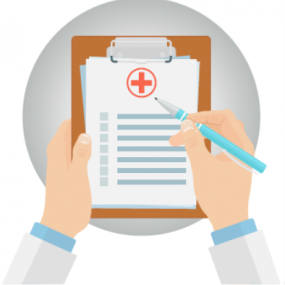
“[The system needs to] allow local services to make local decisions.” Clinical Director’s Network (quote edited for clarity)
A reduction in bureaucracy and top-down management during the pandemic have made staff feel empowered and have enabled faster implementation of plans for local services. This is a demonstration of the importance of clinical input in decision making and proof that clinical leadership at local level can bring about positive change quickly for the benefit of patients and staff. In its response to the Department of Health and Social Care consultation on busting bureaucracy, the College stressed the need for clinical governance mechanisms to foster innovation, by way of streamlining approval routes and sign-off procedures.
The urgency of the COVID-19 pandemic has accelerated the simplification of decision-making and governance, and we should continue to dismantle barriers within systems to improve morale and develop leadership amongst NHS staff.
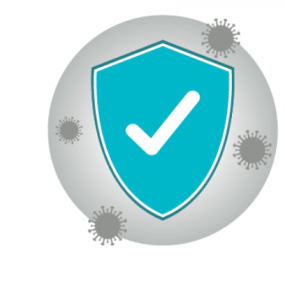
“History is littered with pandemics but this one seemed to catch us all by surprise.” Clinical Director’s Network
The magnitude of the COVID-19 pandemic caught most countries unprepared despite the risk of new pandemics and the need for preparedness being raised as a critical risk over many years by global health organisations. In the end the NHS was not overwhelmed during this pandemic due in large part to the herculean efforts of staff of all grades to transform and adapt healthcare delivery rapidly to meet the needs of COVID-19 patients. However, this has come at a cost to the physical and mental wellbeing of staff and also in delays to elective care for millions of patients.
Better planning and preparation for future pandemics should be incorporated across the risk management processes of health and social care systems, as well as across the full spectrum of other public services, from training in medical schools to public health strategies. Now that the UK Health Security Agency has been established, future-proofing for pandemics will hopefully become the norm and provide standards and guidance for preparedness.
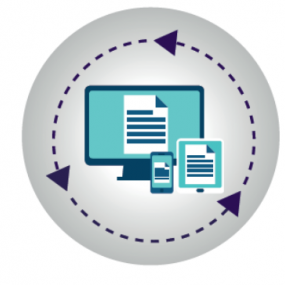
“I’ve found it easier not having to travel for courses…. We can reduce the environmental impact of our profession by reducing the need to travel and hosting more virtual meetings.” Consultant Anaesthetist
The pandemic saw an increase in the use of digital and remote communications across the NHS. For instance NHS Digital reported a rise in GP telephone appointments because face-to-face appointments could not be conducted in the first few months of the pandemic. Although many face-to-face appointments have now resumed, phone appointments are likely to remain a key part of the work of GPs. NHS staff have also benefited from educational activities and events delivered through online platforms, such as the Faculty of Pain Medicine’s recently launched FPM Learning, an online Pain Medicine education hub. These platforms offer content such as webinars, learning modules and training courses that have been optimised to allow users to continue to gain credits for continuing professional development and access training virtually, avoiding the need to travel to attend face-to-face events during social distancing restrictions.
COVID-19 has accelerated the pace of digital innovation and we should continue to make the best of these new tools where appropriate, while remaining mindful of the needs and preferences of individual patients, particularly those who may not have access to technology.
Conclusion
During the pandemic, the NHS has delivered a lot of change in a small amount of time, demonstrating that it can be agile and innovative. This has created a sea change in attitude to finding solutions and a real commitment to keep up the momentum with improvement and innovation in healthcare delivery.
In a recent speech for the Health Service Journal conference, Sir Simon Stevens said that the pandemic offered “an opportunity to think very innovatively, and potentially very radically, […] rather than just return to the same old ways of doing things.”
Many of the lessons in this report, and similar ones from other organisations, have the potential to become part of the way healthcare is delivered beyond the pandemic and, if adopted, will support not only the recovery but the realisation of the ambitions of the NHS Long Term Plan and the NHS People Plan, as well as their devolved nations’ equivalents.
What is needed now is for the commitment to doing things differently to be backed by a commitment to equip the NHS with the resources, staffing and capacity that it needs to embed what it has learnt so far and continue to learn and improve as the pandemic evolves.
